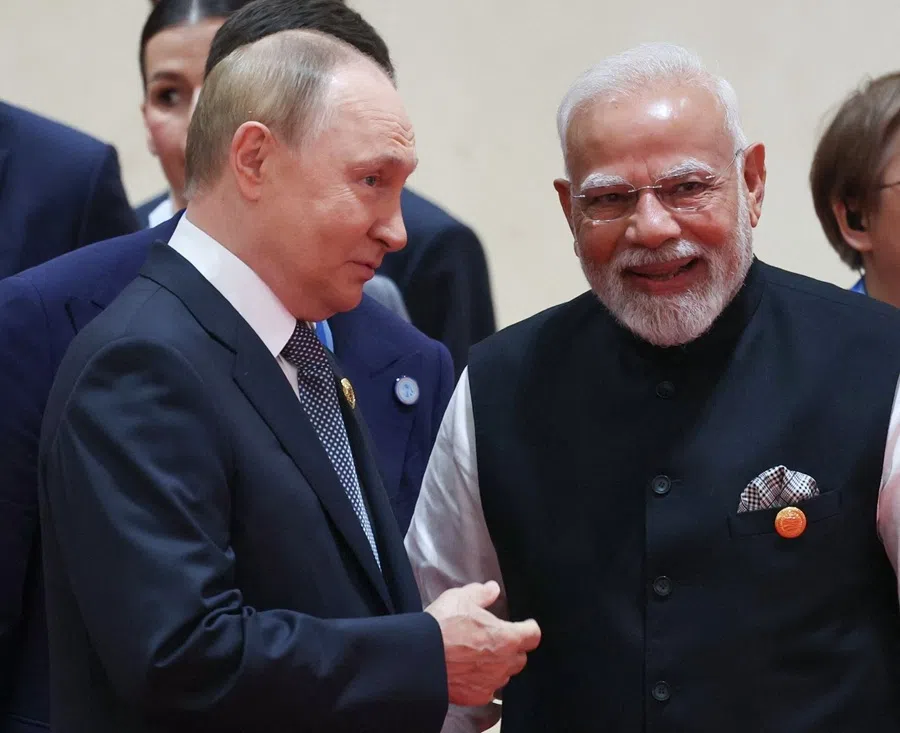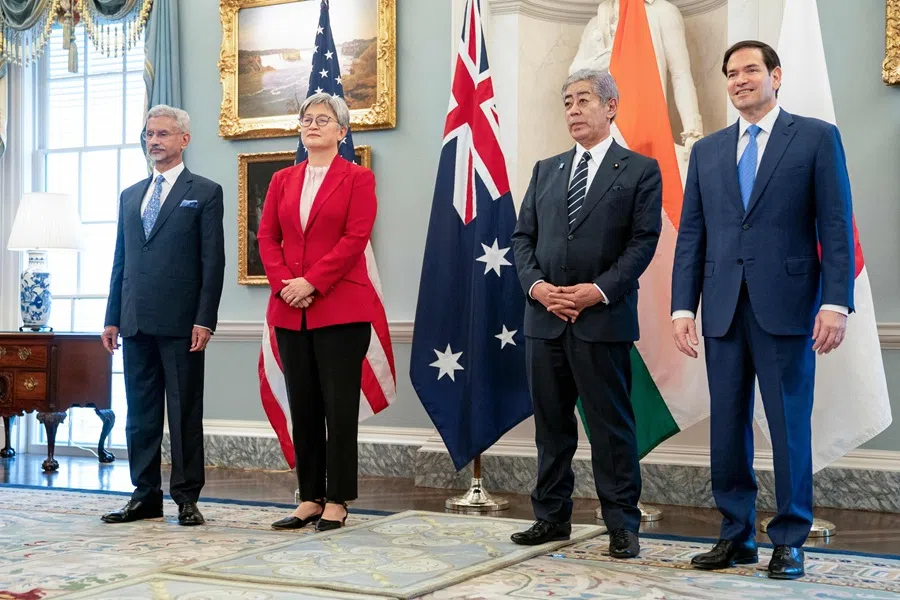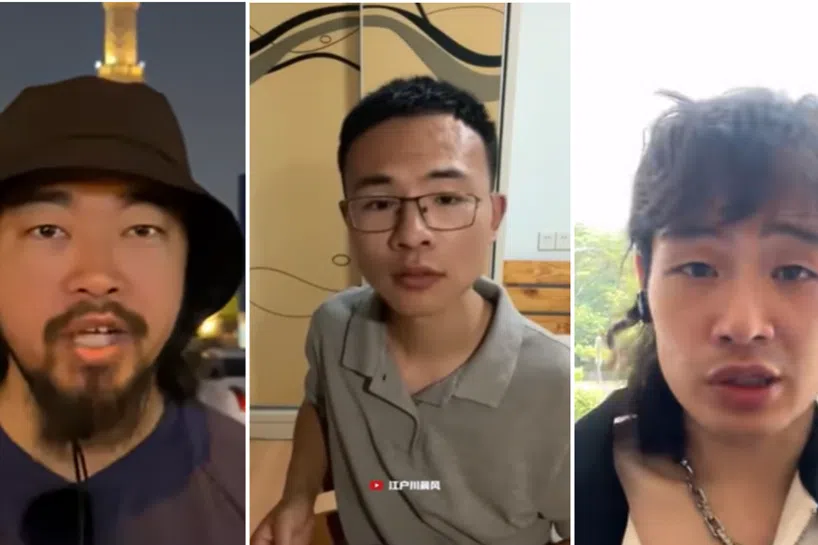The new Asian chessboard: Modi navigates China, Japan and a ‘wobbly’ US
By deepening relations with Japan and signalling openness to dialogue with China, India may be saying that equality remains the key strategic goal and it does not like to be pushed, says Indian analyst Rishi Gupta.

Indian Prime Minister Narendra Modi concluded a four-day tour of two key East Asian neighbours, Japan and China, from 29 August to 1 September. On the first leg of the trip, Modi met with Japanese Prime Minister Shigeru Ishiba. This marked Modi’s eighth visit to Japan since taking office in 2015, but his first with Ishiba, and on tangible grounds, the most substantial one. Ishiba resigned on 7 September, just days after the meeting — a reminder of the fluid and often unpredictable nature of global politics.
The second leg of the trip to China included a bilateral meeting with Chinese President Xi Jinping, Russian President Vladimir Putin and participation in the Shanghai Cooperation Organisation (SCO) summit in Tianjin. The ceremonial red-carpet welcome was a momentous event in India-China relations, as it was Modi’s first visit to China after seven years — a reflection of the tense period between India and China caused by the border conflict in Galwan Valley at the Line of Actual Control (LAC) in 2020.
This was also the second bilateral meeting between the two leaders in the past two years. After signing a deal on military disengagement and the normalisation of bilateral ties, the two leaders met in Kazan, Russia, in October 2024, on the sidelines of the BRICS summit.
Beyond the SCO summit, the Modi-Xi meeting, and the limousine ride with Putin, what did Prime Minister Modi’s four-day East Asian tour signify for India overall?
Every handshake, hug and warmth shared at the SCO and its sidelines had strong messages — especially the fact that the American bully had its limitations.
Delhi’s strong and clear messaging to the US
The two days in China were presumably among the most vibrant ones for Indian diplomacy, as they were a step forward in furthering the peace process with China. While many believe India would not let its guard down against China because problems with Beijing are deep-rooted, territorial and strategic, the disengagement of the two militaries at the LAC has brought the costly conflict to a halt, if not an end.
Delhi is also aware of the evil of a two-front war — with China at the LAC and with Pakistan on the Line of Control — and that the Beijing-Islamabad alliance continues to pose a threat. The security guarantees that China offers to Pakistan when it comes to protecting Pakistan-based terrorist groups at the multilateral forums remain a living reality that India finds problematic with China.

Every handshake, hug and warmth shared at the SCO and its sidelines had strong messages — especially the fact that the American bully had its limitations. Modi greeted his “friend”, Russian President Vladimir Putin, shared a cautious handshake with next-door neighbour President Xi Jinping, and took a veiled dig at arch-rival Pakistan in the presence of Prime Minister Shehbaz Sharif at the SCO table for the heinous terrorist attack in Kashmir in May this year that resulted in a major war.
Make no mistake, the international media glare over Modi’s visit reflected an unease in the US. The global strategic pundits tried to speculate what was discussed in the 45-minute one-on-one talk between Modi and Putin as the two drove in the latter’s limousine.
... Delhi’s messaging to the US seems strong and clear: India may not be willing to succumb to American pressure, and just like the US, will protect its interests; Delhi too will not blink in protecting its own.
From refusing every opportunity to acknowledge President Trump’s reported intervention in bringing India-Pakistan fighting to a close, to refusing to stop buying oil from Russia despite the US’s 50% tariffs, Delhi’s messaging to the US seems strong and clear: India may not be willing to succumb to American pressure, and just like the US, will protect its interests; Delhi too will not blink in protecting its own.

Secondly, India does not discard older friendships while it invests in the new, at least not with Russia — a country that has stood with India for five decades, beginning with the former Soviet Union’s support to India during the 1971 war against Pakistan for the freedom of Bangladesh.
China’s diplomatic surge, India’s test
If there was ever a clearer test of India’s multi-alignment strategy — both in substance and symbolism — it was the diplomatic vibrancy Prime Minister Modi projected during his visit to China. But it was not just India that seized the moment. China, too, demonstrated assertive leadership as it hosted the SCO, held bilateral talks with key partners including India and Russia, and welcomed several Eurasian leaders to the Victory Day parade commemorating China’s triumph over Japanese imperialism in World War II.
The trio — Chinese President Xi Jinping, Russian President Vladimir Putin and North Korean leader Kim Jong Un — also put up a powerful display against the backdrop of the Russian war in Ukraine.
Over the course of a day filled with bilateral meetings and formal greetings, followed by the SCO summit in Tianjin and culminating in a military parade in Beijing, multiple dynamics were on display.
From Beijing’s perspective, these events underscored China’s central role in global power politics. For New Delhi, they served as a reminder that engaging with China requires both managing competition and seizing opportunities.
Revisiting East Asian alliance with Japan
Amid ongoing tensions with the US and President Donald Trump’s direct targeting of the Indian economy and its relationship with Russia, Modi’s visit to Japan was a telling story of the reliable partnership the two countries have built over the past five decades, especially in the economic and defence areas.
Just before landing in Tokyo, Prime Minister Modi addressed a gathering at the Marui Suzuki plant in his home state, Gujarat, where he highlighted how Japan’s joint venture with India in the early 1980s gave birth to a joint venture between India’s indigenous car manufacturer Maruti Udyog Limited and Japan’s Suzuki Motor Corporation, which is one of the top-ten global automobile manufactures globally.

The India-made cars produced under the joint venture are exported globally, embodying Prime Minister Modi’s vision of “Make in India, Make for the World”—a step towards establishing India as a global manufacturing hub.
Amid ongoing challenges with the US, Modi was quick to reiterate his vision for Atmanirbhar Bharat —a self-reliant India — during his Independence Day address from the ramparts of the Red Fort on 15 August, marking the day India gained freedom from British colonial rule in 1947.
While the “Make in India” initiative is a Modi administration brainchild, India’s long-standing cooperation with Japan had already laid the groundwork for such active collaboration and initiatives.
Also, when Washington, DC, increased tariffs on India, Modi returned to Delhi with a private investment commitment of 10 trillion yen (approximately US$68 billion) from Japan to India over the next ten years. The 15th India-Japan Annual Summit Joint Statement — Partnership for Security and Prosperity of our Next Generation — lays out whole-of-nation lines of efforts to steer the partnership in eight key sectors — economy, economic security, mobility, environment, technology and innovation, health, people-to-people ties and state-prefecture engagement.
India-Japan: Quad’s anchor as US wobbles
Besides economic cooperation, India and Japan are two key security partners in the Indo-Pacific and ardent advocates of a “Free and Open Indo-Pacific”. The late Prime Minister Shinzo Abe was the key architect of the idea for the Quadrilateral Security Dialogue (Quad). With Japan remaining a household name for most Indians, Delhi’s partnership with Tokyo has evolved over the decades, with public opinion playing a leading role, and today, both have built flourishing security bonds.
During Prime Minister Modi’s visit, a Joint Declaration on Security Cooperation was signed, elevating defence and security ties to a new level by “taking into account the contemporary geographical realities and security configurations in the region”. The declaration also addresses collaboration on high-end technology, equipment and supply chain linkages — key concerns amid rising militarisation, grey zone conflicts and fears of global digital disruption.
This is one of those moments when the alliance appears fragile, requiring some members to do the heavy lifting while retaining the weaker pillar rather than losing hope and abandoning it.

On the other hand, as uncertainties over the Quad loom large and the alliance’s once-strongest pillar — the US — wobbles under the weight of tariffs and transactional politics, India and Japan may need to strengthen their roles within the grouping.
This is one of those moments when the alliance appears fragile, requiring some members to do the heavy lifting while retaining the weaker pillar rather than losing hope and abandoning it. In this context, India-Japan cooperation will be critical to sustaining the Quad. Sharing a common Asian stake, New Delhi and Tokyo are well positioned to provide the continuity and autonomy the Quad needs to maintain trust in the region.
To conclude, Prime Minister Modi’s East Asian tour was more than just photo ops — it was a testament to Delhi’s multi-alignment approach and a recalibration of its strategic compass. By deepening relations with Japan and signalling openness to dialogue with China, India is saying that equality remains the key strategic goal, and it does not like to be pushed. Conversely, India’s embrace of Japan, through new investments, security cooperation and development partnerships, demonstrates a clear belief in continuity rather than unpredictability.
The opinions expressed in this article are those of the author alone and do not reflect the views of the author’s current or past affiliations in any form.





